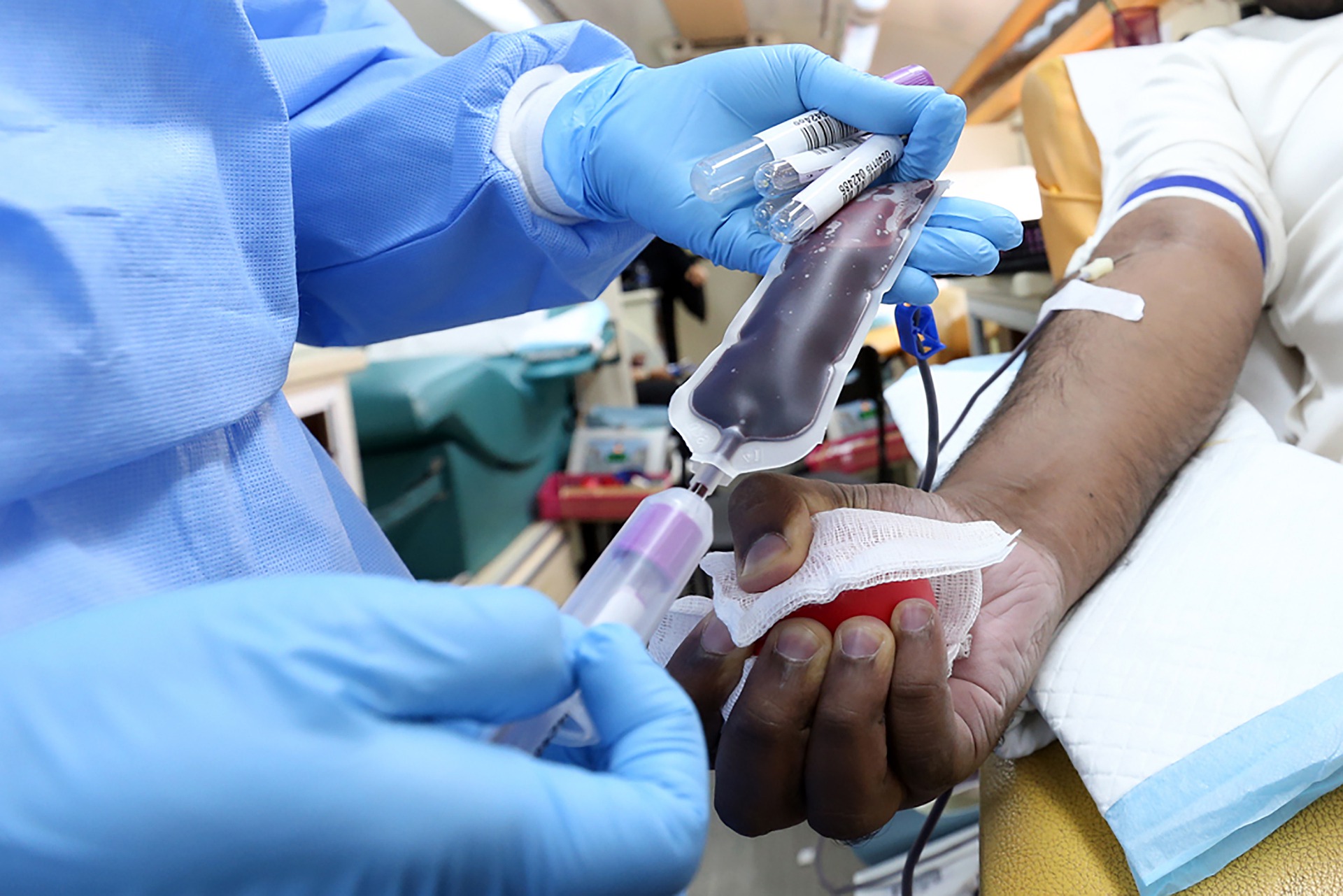The US just approved the use of plasma from covid-19 survivors as a treatment

The US has approved wide emergency use of blood plasma from covid-19 survivors as a treatment for coronavirus infection, despite limited evidence it helps.
Blood drug: The therapy, which the White House touted as a “breakthrough,” involves giving plasma from survivors to those battling the infection. It has been tried since early in the year in China, the Netherlands, and also in the US, where more than 70,000 patients have received it already as part of studies or under case-by-case medical exemptions, according to the US Food and Drug Administration.
How does it work: Blood plasma from survivors contains antibodies that can help block a virus, and studies have provided hints that transfusions can cut the chance of death, especially if given early. The FDA cited that chance in its emergency-use authorization for the treatment, calling convalescent plasma a “potential promising” treatment. The agency added, however, that plasma does not yet qualify as a new “standard of care.”
The FDA is able to approve drugs that “may be effective” for wider use during public health emergencies, even without ironclad evidence they work. The agency previously granted an emergency authorization for two malaria drugs in March, but it reversed itself in June, saying the drugs, hydroxychloroquine and chloroquine, were unlikely to be effective and caused side effects on people’s hearts.
Poorly studied: Some doctors have criticized how the treatment has been handled in the US. Because doctors have been allowed to give plasma to tens of thousands of patients outside of trials, they say, it’s been difficult to gather decisive evidence on the effects. Proof of efficacy requires controlled studies in which some patients get plasma and others get a placebo. The new authorization effectively eliminates paperwork required since April to give plasma to individual patients. Blood banks have actively recruited coronavirus survivors to donate blood.
Political pressure: Last week, the New York Times quoted government health officials who expressed concern there wasn’t enough information to back an approval. Shortly afterwards, President Donald Trump took to Twitter to accuse the FDA and the “deep state, or whoever” of slow-walking cures in order to interfere with his chances in the November general election.
Vaccine doubts: The plasma approval could foreshadow US government actions around a vaccine for covid-19, some scientists fear. The chief doctor coordinating vaccine studies in the US has said data supporting a vaccine won’t be in hand until January at the earliest, but the Financial Times reported that the administration is looking to fast-track an emergency approval of a vaccine before Election Day. If an unsafe or ineffective vaccine goes into wide use, that will be a bigger setback than we’ll suffer if convalescent plasma proves a dud. That is because plasma is given to people who are already sick, while vaccines are given to healthy people.
Deep Dive
Biotechnology and health
How scientists traced a mysterious covid case back to six toilets
When wastewater surveillance turns into a hunt for a single infected individual, the ethics get tricky.
An AI-driven “factory of drugs” claims to have hit a big milestone
Insilico is part of a wave of companies betting on AI as the "next amazing revolution" in biology
The quest to legitimize longevity medicine
Longevity clinics offer a mix of services that largely cater to the wealthy. Now there’s a push to establish their work as a credible medical field.
There is a new most expensive drug in the world. Price tag: $4.25 million
But will the latest gene therapy suffer the curse of the costliest drug?
Stay connected
Get the latest updates from
MIT Technology Review
Discover special offers, top stories, upcoming events, and more.